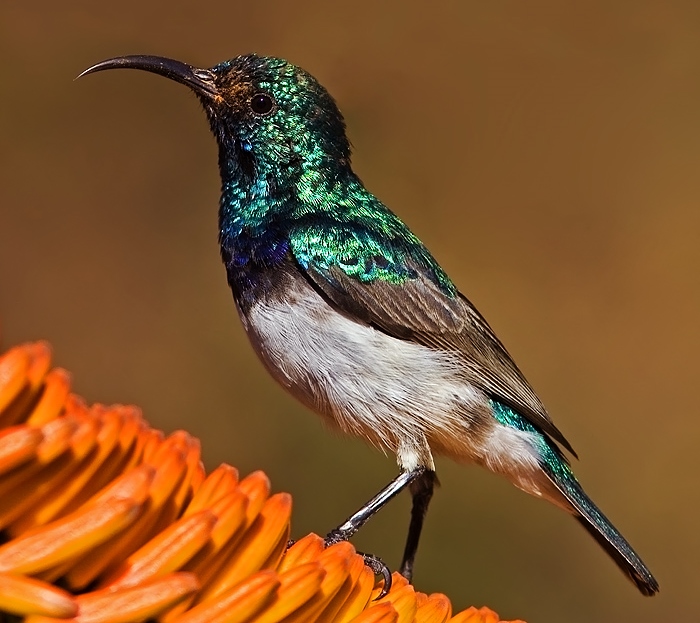 |
| Photo by Aivar Mikko (Trek Nature) |
Common name:
white-belied sunbird (en); beija-flor-de-barriga-branca (pt); souïmanga à ventre blanc (fr); suimanga de pecho blanco (es); weißbauch-nektarvogel (de)
Taxonomy:
Order Passeriformes
Family Nectariniidae
Range:
This species is found in southern Africa, from southern Angola, Zambia and southern Tanzania, south to north-eastern South Africa.
Size:
These birds are 11 cm long and weigh 7,5 g.
Habitat:
The white-belied sunbird is mostly found in dry savannas, especially Acacia, bushwillow Combretum, Zambezi teak Baikiaea plurijuga and mixed miombo Brachystegia woodlands. They are also found in rural gardens and within urban areas.
Diet:
They feed on the nectar of a wide range of flowering plants, which is sometimes supplemented with insects, such as aphids, ants, grasshoppers and moths, and spiders.
Breeding:
White-belied sunbirds breed in June-March, with a peak in September-December. The female builds the nest alone, an untidy oval-shaped structure made of dry material such as grass and leaves, bound together with spider web. The nest is decorated with bits of leaves and bark, and lined with plant down, feathers and wool. It is attached to the branches of a thorny plant. The female lays 1-3 eggs, which she incubates alone for 13-14 days. The chicks are fed by both parents and fledge 14-15 days after hatching.
Conservation:
IUCN status – LC (Least Concern)
This species has a very large breeding range and is described as abundant. The population is suspected to be stable in the absence of evidence for any declines or substantial threats. In fact, it seems to have benefited from the fragmentation and disturbance of miombo woodlands.







